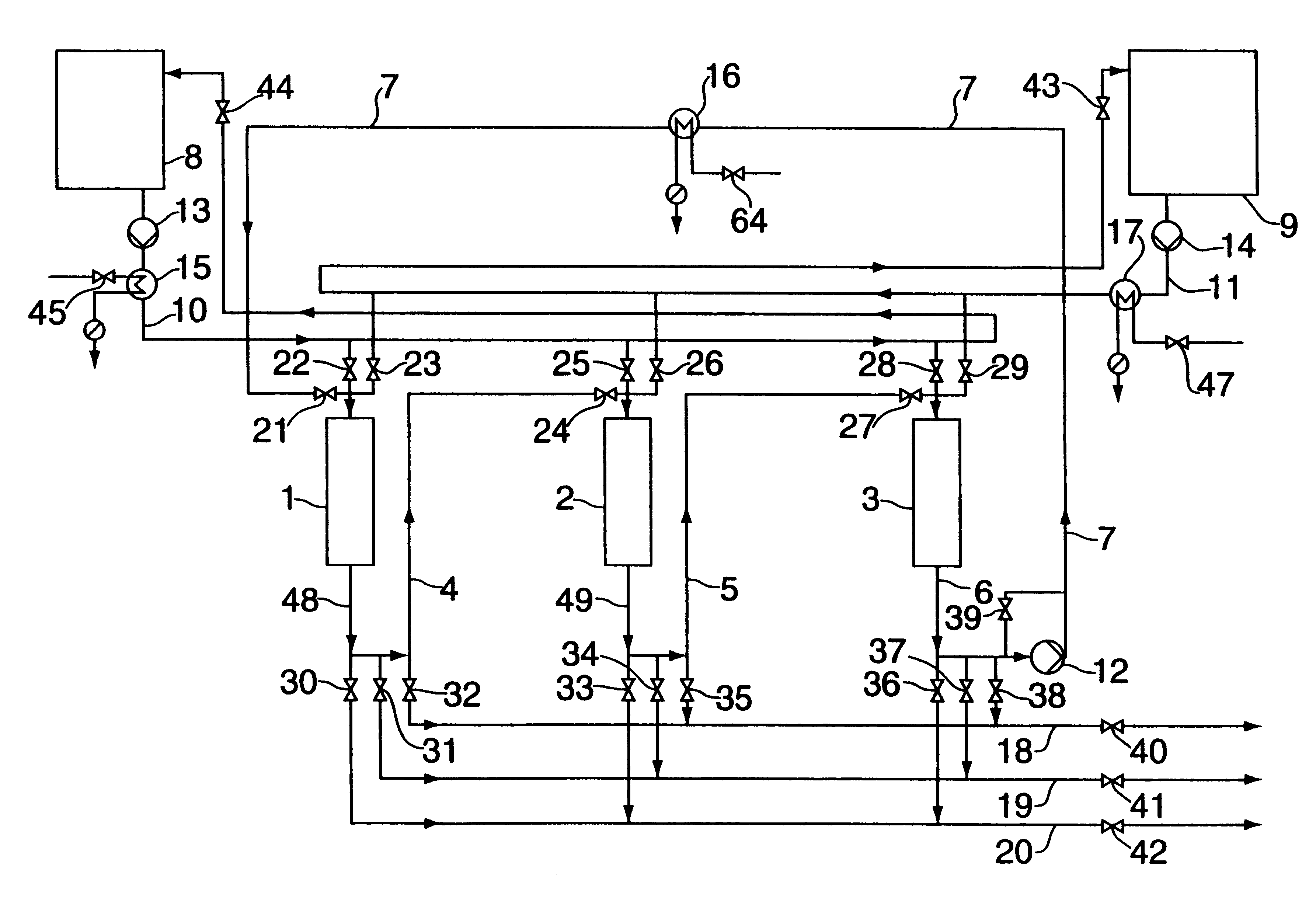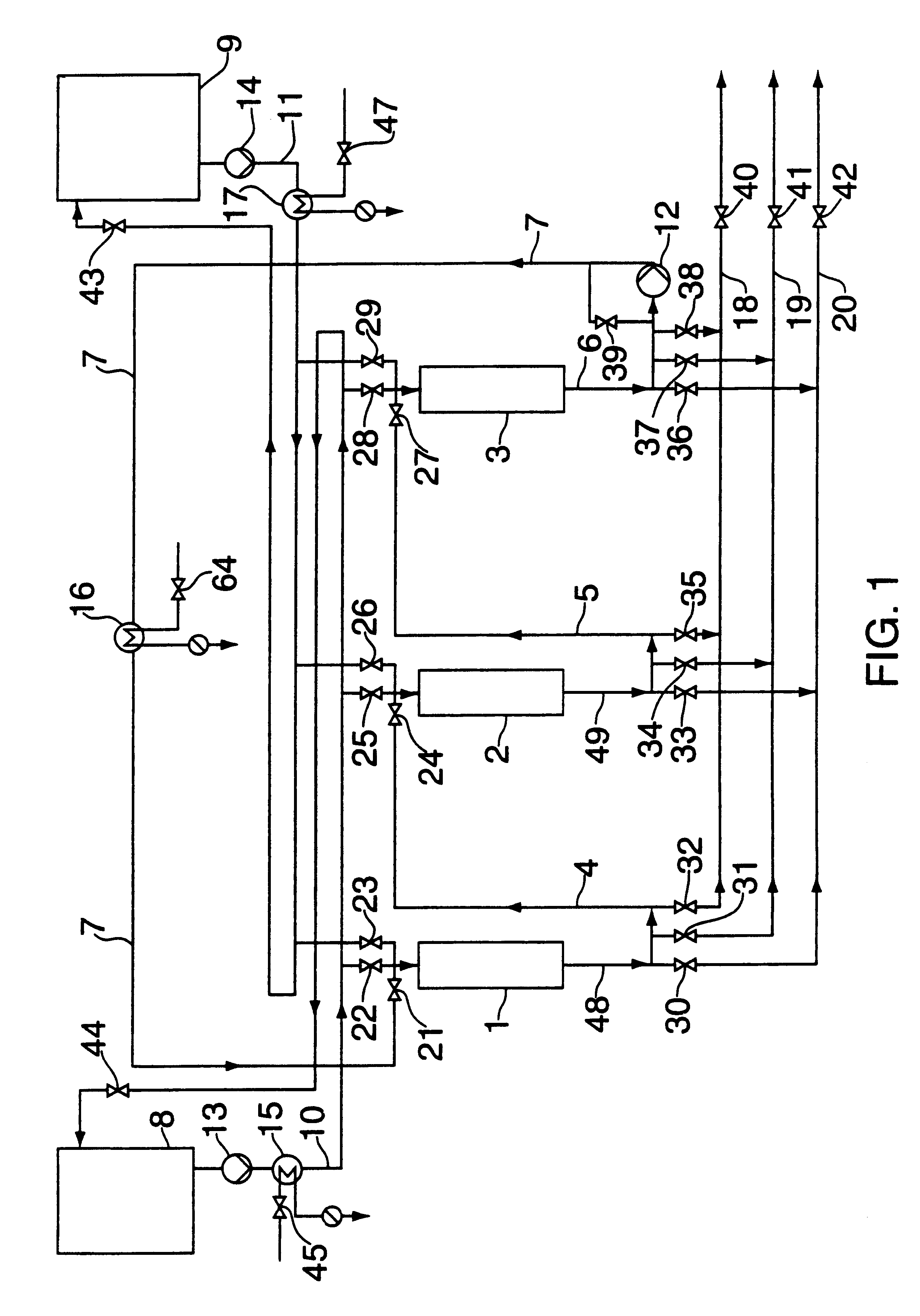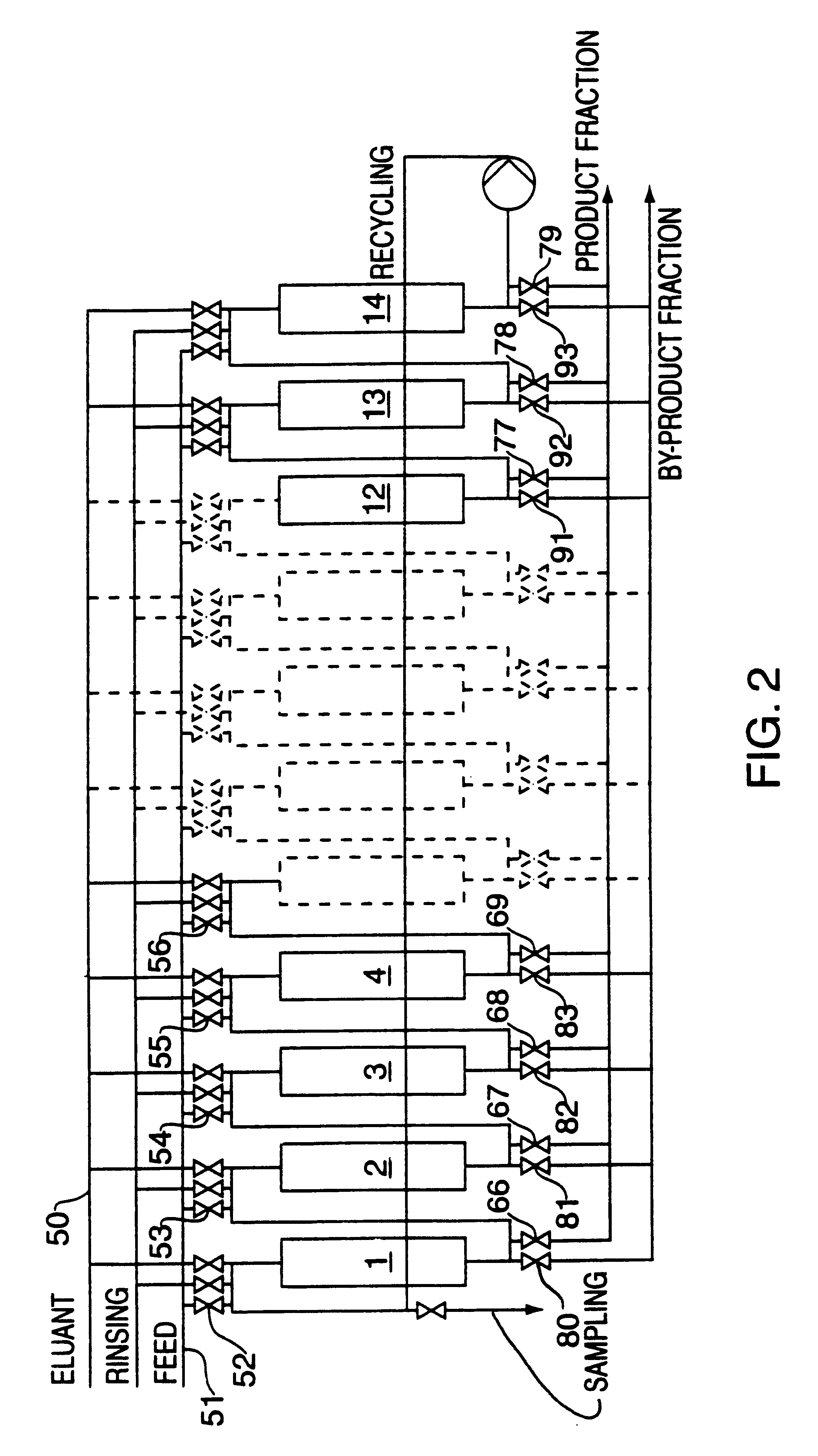Fractionation method for sucrose-containing solutions
a technology of sucrose and eluent, which is applied in the field of fusing method of sucrosecontaining solution, can solve the problems of low solid content of sucrose and betaine fraction obtained by fusing method, lower consumption of eluant, and lower dilution of products, so as to achieve the effect of equal purity and high yield
- Summary
- Abstract
- Description
- Claims
- Application Information
AI Technical Summary
Benefits of technology
Problems solved by technology
Method used
Image
Examples
example 2
Sequential SMB Process; Separation of Sucrose and Betaine from Molasses, Further Separation of Betaine Fraction.
The apparatus and test conditions described in Example 1 were employed. The procedure was also similar to that of Example 1, except that the fraction volumes were adjusted. The adjustment caused a higher purity, but lower yield, for sucrose and a lower purity, but higher yield, for betaine than obtained in the first fractionation in Example 1. Subsequent to evaporation, the resulting betaine fraction was subjected to re-fractionation by a similar sequential SMB process. The sucrose fraction obtained from the second fractionation was combined with the sucrose fraction from the first fractionation, and the residue fractions were likewise combined.
Analyses of the feed solutions and the product fractions withdrawn during one sequence after an equilibrium was reached are presented in Table 2, where the percentages of the different components are given as percent by weight dry s...
example 3
The method described in Example 2 was essentially followed, but the effect of the pH of the feed solution for the second fractionation (which solution had been obtained from the betaine fraction from the first fractionation) was studied, performing the second fractionation in such a way that (a) the pH of the feed solution was not adjusted, and, hence, the pH was 10.2, (b) the pH of the feed solution was adjusted with hydrochloric acid to 9.5, and (c) the pH of the feed solution was adjusted with NaOH to 11.2.
Analyses of the feed solution for the second fractionation (i.e. further separation of the betaine fraction) and the product fractions withdrawn during one sequence after an equilibrium was reached are presented in Table 3, where the percentages of the different components are given as percent by weight dry solids basis.
The yields from the second fractionation in the above cases (a), (b) and (c) were as follows:
(a) sucrose 57.3%, betaine 95.4%
(b) sucrose 59.6%, betaine 96.8%
(c)...
example 4
Continuous SMB Process; Separation of Sucrose and By-product Fraction from Molasses (Reference Example).
The test apparatus comprised 14 columns connected in series, each having a diameter of 0.2 m and each containing a packed bed having a height of 0.85 m. FIG. 2 shows a schematic diagram of the test apparatus.
The columns were packed with a polystyrene-based cross-linked (5.5% DVB) strong cation exchanger having a mean bead size of 0.32 mm. The packing material was equilibrated with feed solution and was predominantly in potassium and sodium form.
Water, as eluant, was introduced into the column system through conduit 50 at a flow rate of 83.5 l / hr. Feed solution was introduced through conduit 51 to each column through feed valves 52-65 at a flow rate of 13.5 l / hr. for 150 seconds. The feed conduits were rinsed with eluant (30 s, 13.5 l / hr.) subsequent to the introduction of the feed solution. The flow rate of the product fraction through valves 66-79 was adjusted to 21 l / hr., which ...
PUM
 Login to View More
Login to View More Abstract
Description
Claims
Application Information
 Login to View More
Login to View More - R&D
- Intellectual Property
- Life Sciences
- Materials
- Tech Scout
- Unparalleled Data Quality
- Higher Quality Content
- 60% Fewer Hallucinations
Browse by: Latest US Patents, China's latest patents, Technical Efficacy Thesaurus, Application Domain, Technology Topic, Popular Technical Reports.
© 2025 PatSnap. All rights reserved.Legal|Privacy policy|Modern Slavery Act Transparency Statement|Sitemap|About US| Contact US: help@patsnap.com



